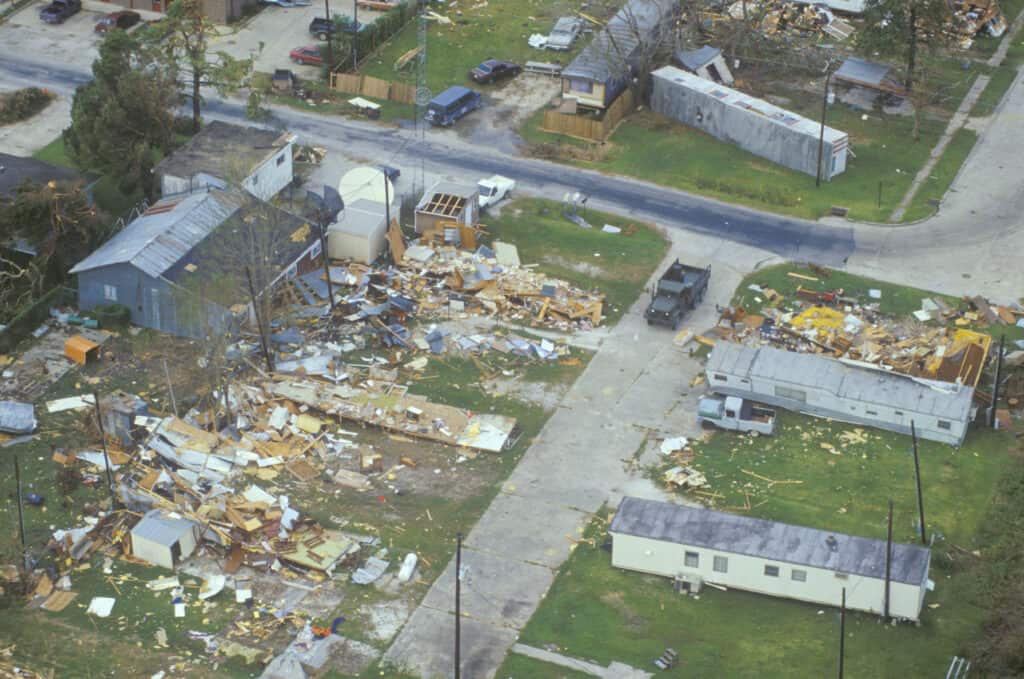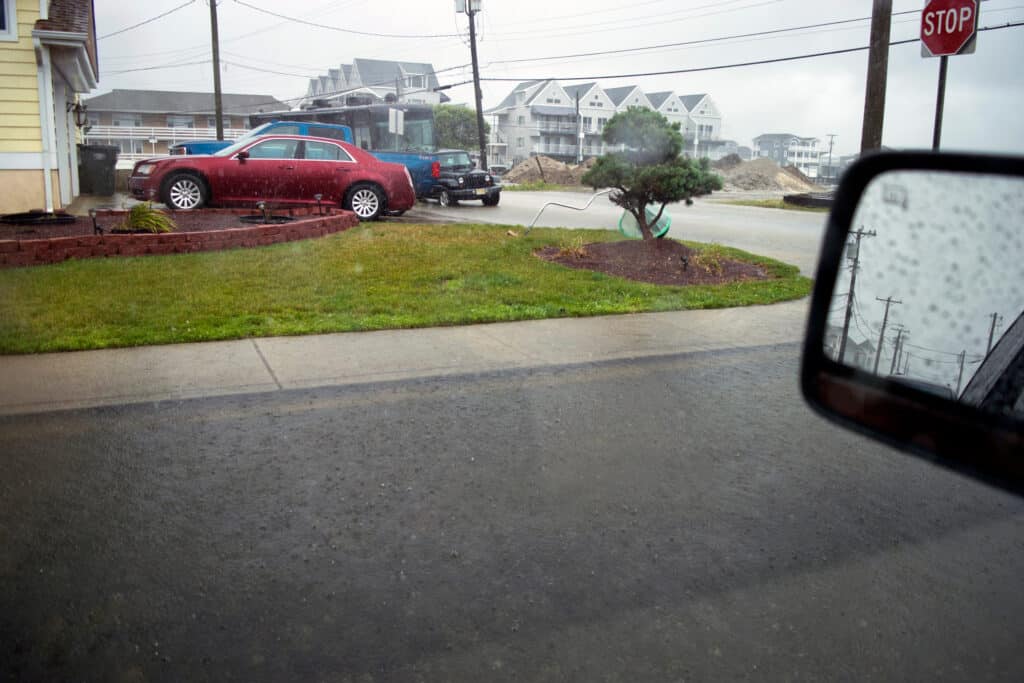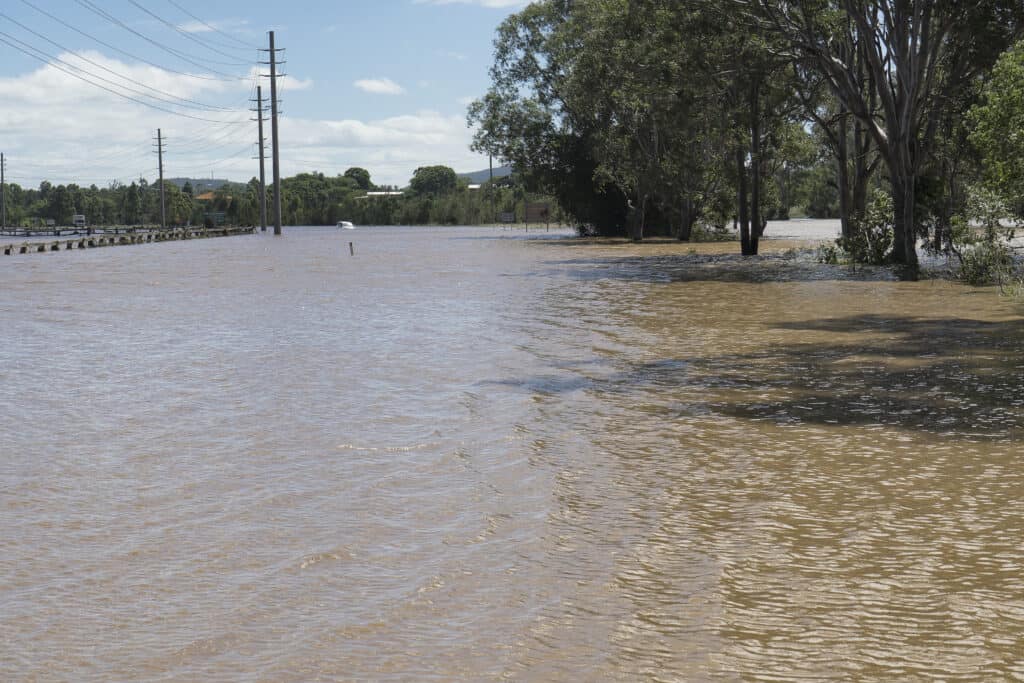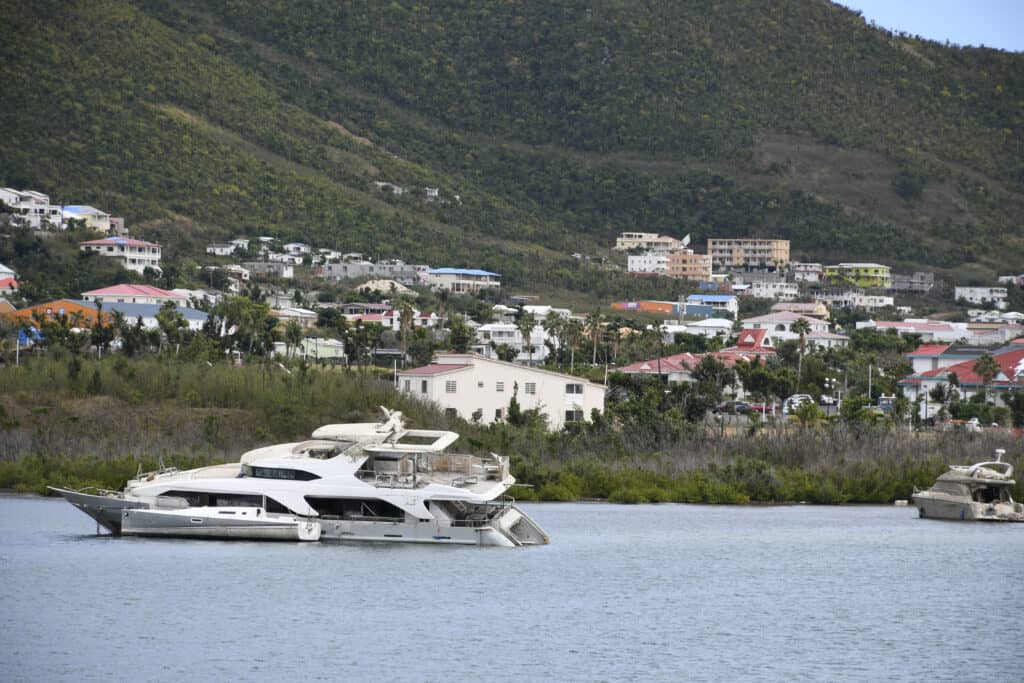Floods are catastrophic and leave behind severe damage for something that happens frequently and is expected at specific times. Sometimes, it’s impossible to imagine the human and financial losses. Yes, some people love bodies of water, but even the smallest stream, can flood.
Throughout history, floods—among the most terrifying natural disasters—have caused countless catastrophes. In terms of global impact, floods are the second most common natural disaster after wildfires.
More often than not, floods are triggered by hurricanes in the United States. Although flooding can pose a threat to all 50 US states, Florida, Texas, the Mississippi River, and the Gulf Coast have experienced most of the severe flooding in the country due to their vulnerability to hurricanes.
Flooding can also be caused by overflowing rivers and streams. A broken dam, excessive rainfall, or ice melts in the mountains, can cause a river to flood the surrounding land.
It might interest you to know that floods are part of the natural water cycle. They can be absorbed by wetlands along lakeshores, estuaries, and riverbanks. Trees, grasses, and sedges that grow in wetlands help flood waters move more slowly and evenly across the landscape.
The wetlands along the Mississippi River once held enough floodwater to last at least 60 days, according to the U.S. Environmental Protection Agency (EPA). Currently, they can hold floodwater for only 12 days.
The 5 All-time Biggest Floods in Florida.
What’s not to love about Florida? The state has it all, from the freshwater springs, and world-famous theme parks, to the fantastic beaches and breathtaking coastline.
According to Florida Flood Insurance, Florida has more rivers, streams, and waterways than any other state in America. It also has well as over 650 miles of beaches, and an average annual rainfall of 59.21 inches. The state’s picturesque lifestyle does, however, come at a cost.
Due to the state’s high groundwater levels and recurrent storms throughout the year, Florida is particularly susceptible to floods. Hurricanes, tropical storms, and intense thunderstorms are the main causes of flooding in the state of Florida because of its proximity to the sea.
Floods are America’s most expensive natural disaster. Michael Grimm, a representative of the Federal Emergency Management Agency, testified that the cost of flood damage averaged $17 billion per year between 2010 and 2018.
We’ve highlighted some of the worst flood disasters in Florida.
Okeechobee Hurricane of 1928
South Florida was ravaged by one of the deadliest hurricanes in the North Atlantic basin’s recorded history on September 16, 1928. This happened just two years after Miami was devastated by a hurricane. Not only did a Category 4 hurricane make landfall on the southeast coast of Florida, but storm surges collapsed the 4-5 foot dike surrounding Lake Okeechobee and flooded the area. The ensuing flood covered hundreds of square miles, with water reaching depths of over 20 feet in some places.
The catastrophic event claimed the lives of at least 2,500 people, many of whom were migrant farm workers. According to a report, those migrant workers made up about 75% of the total fatalities. Considering that there were about 50,000 people living in south Florida in 1928, the death toll represents at least 5% of the entire population at the time.
Recovery efforts were nearly impossible because it took several weeks for the floodwaters to recede. The Red Cross estimated number, which served as the government’s official count for many years, was 1,836 deaths. However, the figure was revised to at least 2,500 in 2003.
Thousands of people were left homeless by the storm after entire homes were uprooted from their foundations and destroyed by the swiftly moving flood waters. $25 million was estimated for property damage.

The 1928 Okeechobee Hurricane Claimed Over 2,500 Lives
©Everett Collection/Shutterstock.com
Hurricane Andrew, 1992
On August 24, 1992, Hurricane Andrew, a Category 5 hurricane in the Atlantic, made landfall in Florida. Before Katrina in 2005, Andrew was the most expensive storm to make landfall anywhere in the United States and the most damaging to ever strike the state. More property damage was caused by Hurricane Andrew than by Betsy, Agnes, and Hugo combined, making it the most costly hurricane in Florida history with $25.5 billion in losses and 44 fatalities.
There was massive rainfall in Florida, with the highest total in western Dade County at 13.98 inches. 70,000 acres of trees in the Everglades were also submerged.
Data retrieved from the Florida Flood Insurance showed the following cost of damage by county.
- Monroe:$131 million
- Broward:$100 million
- Collier:$30 million
- Miami-Dade:$25 million

The 1992 Hurricane Andrew Devastated Florida
©Joseph Sohm/Shutterstock.com
Tropical Storm Fay, 2008
The record-breaking tropical storm Fay made four landfalls in Florida and claimed the lives of at least 11 people.
On Monday, August 18, Fay made its first landfall as a raging tempest near Key West, Florida after beginning its journey across the islands of Hispaniola and Cuba. Its second landfall was on the morning of the 19th in Southwest Florida close to Naples.
After dropping over 20 inches of rain in certain areas of East Central Florida over the next 48 hours, Fay made what? Yes, you guessed right! Another landfall near Daytona on August 21. The last landfall took place around Carrabelle in Florida after making its way into Apalachee Bay the previous night.
According to the National Hurricane Center, Brevard County recorded significant flooding. The majority of the intense rainfall and flooding happened in the western, more rural area of the county. More than 15,000 homes were flooded as a result of the heavy rains, while 93,000 others lost power supply.

Tropical Storm Fay Was One of The Worst In Florida’s History
©Tom Fern/Shutterstock.com
Tropical Storm Debby of 2012
The tropical storm started out in the central Gulf of Mexico on June 23rd, 2012 before its slow move to the northeast on the 24th and 25th. By the 26th of June, Debby had turned east northeast toward the Florida Big Bend.
The ragged storm caused torrential and sustained heavy rainfall throughout north Florida for 36–48 hours due to its slow motion and interaction with a non-tropical trough across the Southeast U.S. Over 10 inches of heavy rainfall fell over large areas of northeast Florida, the eastern Florida panhandle, and west central Florida north of Tampa. More than 20 inches of rainfall was recorded twice. One was over the eastern Florida panhandle, and the other was between Lake City and the Georgia/Florida line.
The Suncoast Parkway in west central Florida was closed for a week because of floodwaters. Other areas affected by the flooding were Tampa’s Bayshore Boulevard, U.S. Highway 19 close to Hudson, and Pasco county. 106 houses along the Anclote and Pithlachascotee rivers in Pasco County were reported to have been damaged.
According to FEMA’s National Flood Insurance Program, flood damage in Florida amounted to more than $40 million, while storm-related damages totaled an estimated $250 million. A total of 22 counties were designated as Federal Disaster Areas.

After Tropical Storm Debby, 22 counties were designated Federal Disaster Areas.
©Geoffrey Oliver/Shutterstock.com
Hurricane Irma, 2017
How bad was Hurricane Irma? According to the National Hurricane Center, Irma is the fifth most expensive hurricane to have ever pummeled the United States mainland. The total cost was approximated at $50 billion. Florida Flood Insurance also describes it as the hurricane with the highest cost to hit Florida.
On September 10, 2017, it made landfall in the Florida Keys as a Category 4 storm before making its ferocious way to Florida’s mainland as a Category 3 storm. As it moved northwest towards Georgia, Alabama, and Mississippi, hurricane Irma triggered major flooding (about 15 inches of rain over 48 hours), tore off roofs, and disrupted power for more than 6.8 million people.
A report released by the National Hurricane Center stated that there were seven direct and 77 indirect deaths in Florida from Hurricane Irma. The Florida Keys were regarded as the worst hit, with 25% of buildings destroyed.

25% of buildings in The Florida Keys were destroyed after Hurricane Urma
©Freaktography/Shutterstock.com
Up Next…
Our planet can dish out some scary natural disasters. Have a look at some of our other articles and find out just how much damage the United States alone has taken over the years.
- 7 Deadliest Mountains In The U.S. – You adventurous folk might be tempted to climb these, but better to be fully informed before you do.
- 6 Worst Tornadoes – Read about some of the worst tornadoes and the destruction they caused.
- 8 Biggest Earthquakes – Yes even earthquakes have plagued the U.S. and we’ve made a list of the biggest ones.
The photo featured at the top of this post is © MDay Photography/Shutterstock.com
Sources
- National Geographic / Accessed July 28, 2022
- Florida Flood Insurance / Accessed July 28, 2022
- SAMHSA / Accessed July 28, 2022
- USA Today / Accessed July 28, 2022
- Reuters / Accessed July 28, 2022
- World Vision / Accessed July 28, 2022
- NHC / Accessed July 28, 2022
- Direct AC 123 / Accessed July 28, 2022
FAQs (Frequently Asked Questions)
Why are sea levels rising so quickly?
Sea levels are rising much more swiftly than anyone could have anticipated as a result of the warming oceans and melting of ice caps. This poses a risk to coastal cities around the world.
Will the Florida Keys be underwater in 10 years?
One of North America’s regions most susceptible to flooding is the Florida Keys.
The Miami Herald reports that the majority of the main roads in the Florida Keys will probably be underwater by 2025 as a result of the worrying rise in king tides.
What parts of Florida have minimal risk of flooding?
Florida is perhaps the most flood-prone state in America. However, some parts of the Sunshine state have minimal flood risk. They include Gainesville, Orlando, Kissimmee, Lake City, Ocala, and Marianna.
Thank you for reading! Have some feedback for us? Contact the AZ Animals editorial team.







